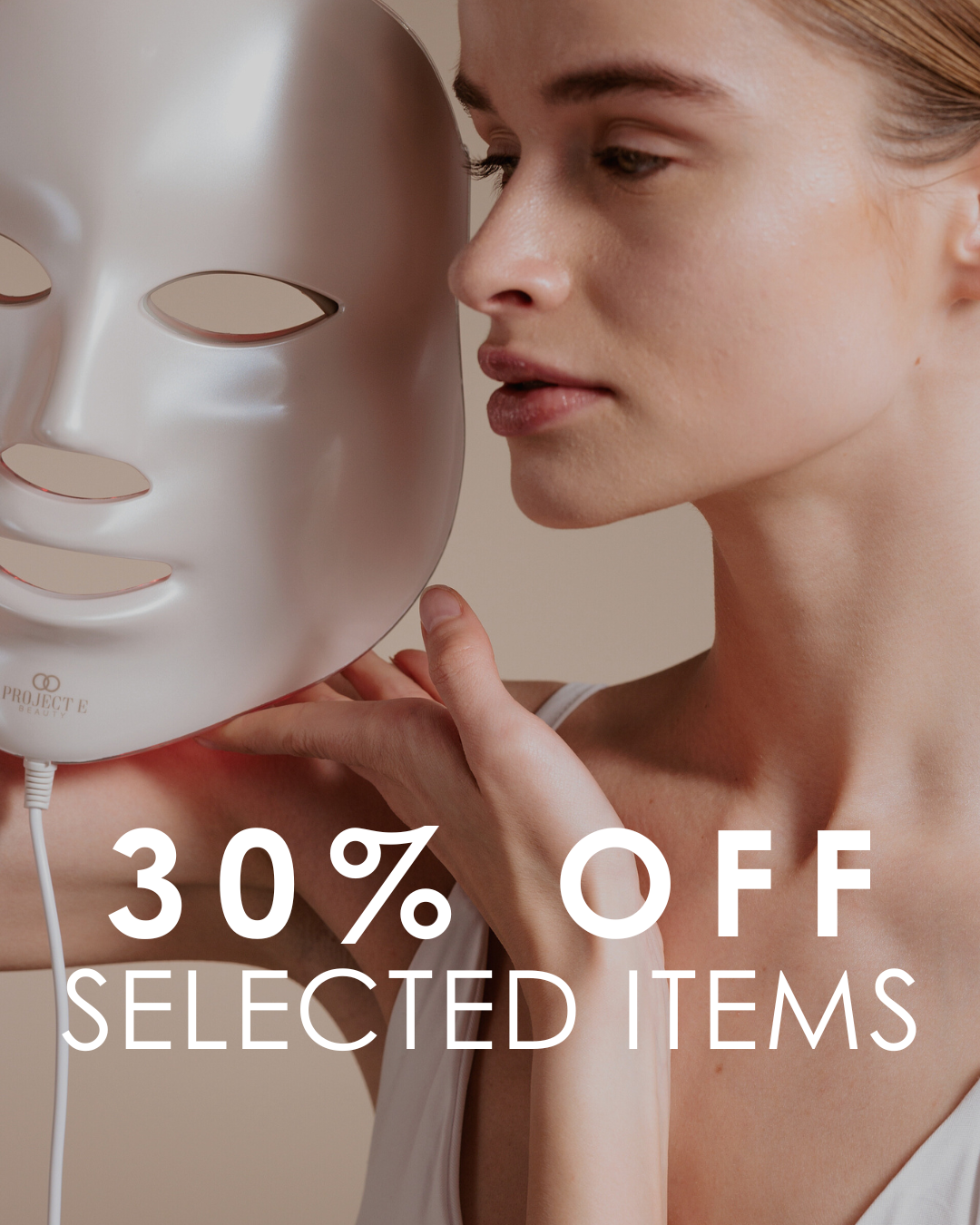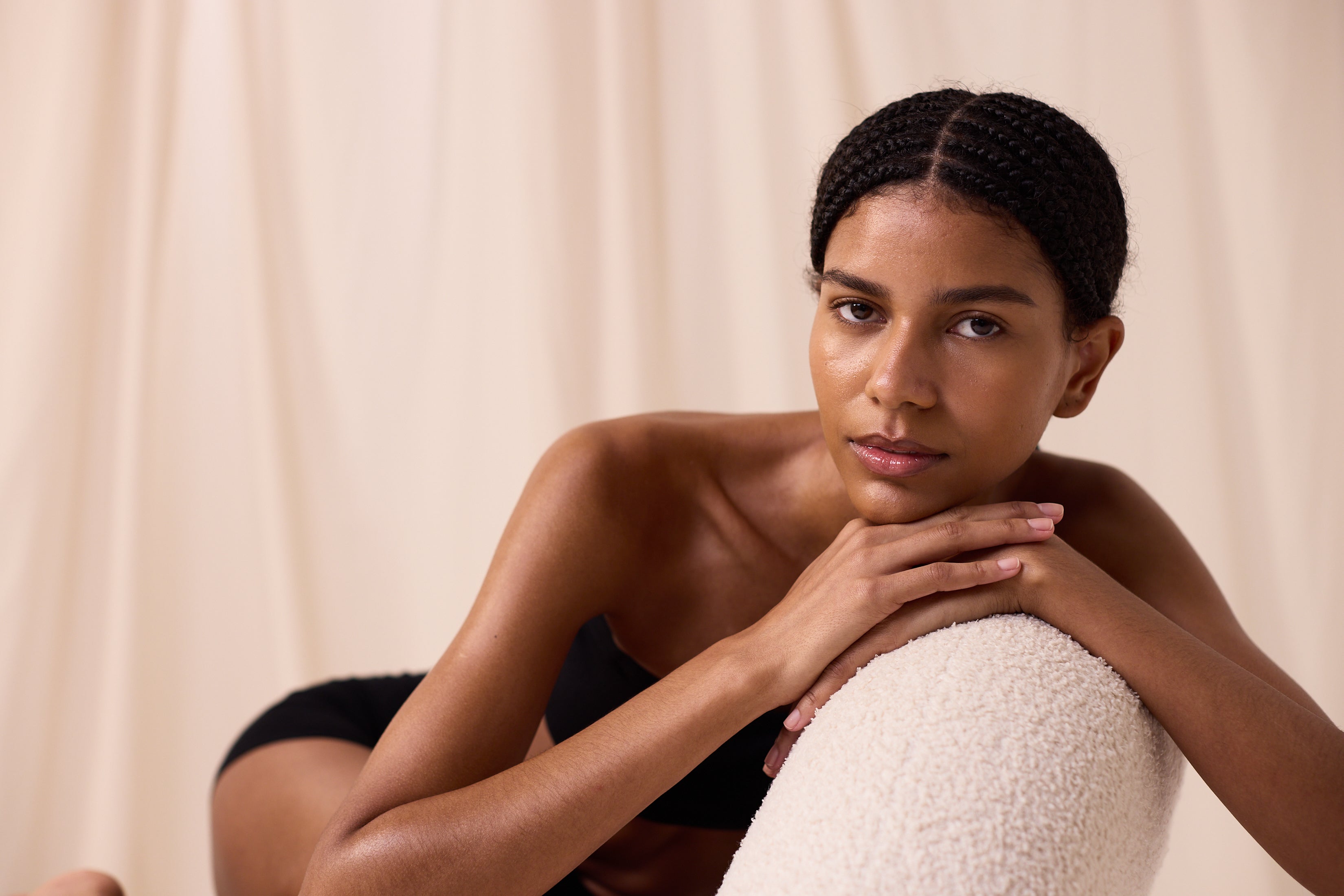
Do I Need Eye Protection For Red Light Therapy?
Reading Time: 5 Minutes
IN THIS ARTICLE:
- 01 What Is LED Light Therapy?
- 02 How Does LED Light Therapy Work?
- 03 Do You Need Eye Protection During LED Light Therapy?
- 04 What Happens When You Don't Use Eye Protection?
- 05 What Types of Eye Protection Are Suitable for LED Light Therapy?
- 06 How to Choose the Right Eye Protection for LED Light Therapy?
- 07 LED Light Therapy Safety Tips
- 08 The Takeaway
Summary: There is no known risk to the eyes of using a red light therapy device, however, you may want to consider some form of eye protection such as goggles or in-built protection, particularly if you are light sensitive.
Delving into the world of beauty tech can be exciting, but it is important to maintain an eye on safety, particularly with at-home devices. Red light therapy masks promise to reverse signs of aging, boost skin elasticity, and even treat and prevent acne, but does it expose our eyes to unnecessary danger, and what can we do to mitigate this risk?
What Is LED Light Therapy?
LED light therapy is an innovative skin treatment that uses certain light wavelengths to penetrate the skin and trigger several cellular responses. More than just a surface-level treatment, this non-invasive therapy penetrates into the skin's layers, igniting cellular rejuvenation processes such as boosting collagen, inflammation reduction, and improved skin tone. LED light therapy is non-invasive, it is gentle on the skin and does not require any downtime.
How Does LED Light Therapy Work?
Different light wavelengths penetrate the skin at different depths. Red and infrared light penetrate the deepest for example. Red light boosts mitochondrial function allowing the cell to operate optimally - ie as a younger cell would. Red light facilitates the production of collagen, elastin, and hyaluronic acid for a firmer and more elastic complexion. Blue light has a shorter wavelength and works effectively to eliminate acne-causing bacteria from the surface or outer skin layer.
Do You Need Eye Protection During LED Light Therapy?
There is no clear data on whether long-term exposure to LED lights can damage the eyes.
Yes, it is necessary to use eye protection during LED light therapy sessions to ensure the safety of your eyes. So, is LED red light therapy safe? Light therapy is safe but for your peace of mind, eye protection should be one of the top priorities. During these sessions, the intense light emitted can pose a risk to your eyes if stared at directly for an extended period. You may experience temporary blurred or dimmed vision for a few minutes.
Ensuring eye protection with goggles or shields not only safeguards against potential harm but also ensures a safe and worry-free treatment experience. Making eye safety a top priority during LED light therapy sessions is a must to preserve your vision and maintain peak eye health.
What LED Light Therapy Device is Safe for Eyes?
If you are concerned about eye safety with LED, always look for a device that meets the IEC 62471 standard, also known as the "Photobiological Safety of Lamps and Lamp Systems." This internationally recognized standard assesses the safety profile of LED-based devices such as masks, wands, and panels. The test evaluates the potential risks to the eyes from exposure to those LED bulbs. Devices are then classified into risk groups based on thier emission levels. Our LumaLux Pro LED Light Therapy device has been independently assessed and falls into the 'no risk' or 'exempt' group. This means it meets the highest standard in terms of eye safety and poses no photobiological risk when usage guidelines are followed. Protective goggles and integrated eye cushions such as those in our LumaLux LED mask ensure optimal comfort and relaxation throughout your treatment.
What Happens When You Don't Use Eye Protection?
The consequences of exposing your eyes to intense light can range from eye strain and discomfort to potential retina damage. To reduce these risks and ensure a safe treatment, it's vital to protect your eyes with black out goggles or eye shields. Prioritize eye safety during any type of light treatment.
What Types of Eye Protection Are Suitable for LED Light Therapy?

*The Image shows the LumaLux Face LED Light Therapy Mask from Project E Beauty with removable cushioned eye protection. Use with eye protection for full light exclusion or without to target the eye area—keep eyes closed during treatment.
When selecting eye protection for intense light therapy sessions, choosing ones specifically designed for the device is essential.
Proper eye protection is crucial during these sessions to prevent any potential harm to your eyes, such as temporary vision impairment or discomfort. By prioritizing the use of appropriate eye protection, you can enjoy your light therapy sessions with confidence and peace of mind.
How to Choose the Right Eye Protection for LED Light Therapy?
To select the ideal eye protection for LED light therapy devices, such as handheld devices, panels or masks, follow these steps:
- For maximum protection, look for blackout goggles that are specifically designed to block the intense light generated by LED bulbs
- Make sure your chosen eye protection offers complete coverage. Choose a secure and snug fit for optimal safety
- Prioritize high-quality materials that effectively shield your eyes
- Consider the comfort and functionality of your eye protection. Look for features like adjustable straps that ensure a comfortable experience without compromising safety
As for LED light therapy masks, most already come equipped with built-in glasses, so some of these considerations may not be necessary. Check out the collection of LED masks from Project E Beauty.
LED Light Therapy Safety Tips
Maximize your LED light therapy experience with these safety tips:
- Check the instructions - prioritize safety by carefully reading and following the guidelines provided
- Shield your eyes- by protecting your eyes from the intense light, you can prevent any potential harm or discomfort
- Start with caution - gradually ease into longer sessions by initially opting for shorter treatment durations. This allows your body to adapt and reduces the risk of adverse reactions or discomfort
- Avoid direct eye contact - resist the temptation to gaze directly at the light source. This will help reduce discomfort
- Seek professional advice - if you have pre-existing eye conditions or concerns, consult a healthcare professional before starting therapy
- Prep your skin - enhance light absorption by ensuring your skin is free from makeup, lotions, or creams before each session
- Stay committed - carefully follow the recommended treatment frequency and duration. How often should you use LED light masks? Consistently use your mask three to four times a week, 10 to 15 minutes per day.
LumaLux Face | Pro LED Light Therapy Mask
Our most advanced LED mask for deeper skin renewal - fine lines, acne, hyperpigmentation, skin texture
The Takeaway
LED light therapy presents a long list of advantages, from its quick and painless treatment to its compatibility with all skin types. However, it's important to prioritize eye safety when regularly exposed to intense light. To mitigate any potential risks, it is recommended to invest in eye protection for your LED light therapy device. If you choose a LED light therapy mask, many options on the market already come equipped with built-in glasses for your convenience. By taking this proactive approach to eye safety, you can fully enjoy the hassle-free and effective results that LED light therapy has to offer.
If you have any questions about purchasing devices from Project E Beauty, please contact us directly at hello@projectebeauty.com for assistance.

written by Sophie Flair
















2 comments
Hi Sharyn,
Thank you for your inquiry. The mask already includes built-in eye pads or eye cushion, which serve as a protective mechanism designed for both comfort and safety during treatment.
If you’d prefer, you can also simply keep your eyes closed throughout the session. However, if you feel more comfortable using your own eye protection or goggles, you may remove the eye cushions and use your preferred option instead.
This way, you can choose whichever method makes you feel safest and most comfortable during your treatments.
If you have any further questions or need assistance, please don’t hesitate to reach out, we’re here to help!
Project E Beauty
Hello
I have purchased a led photon mask, it comes with eyepads to be inserted however i would also like to wear eye protection. Please advise what eye protection would be best.
regards
sharyn armstrong
Leave a comment
This site is protected by hCaptcha and the hCaptcha Privacy Policy and Terms of Service apply.